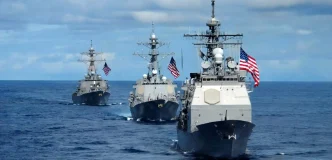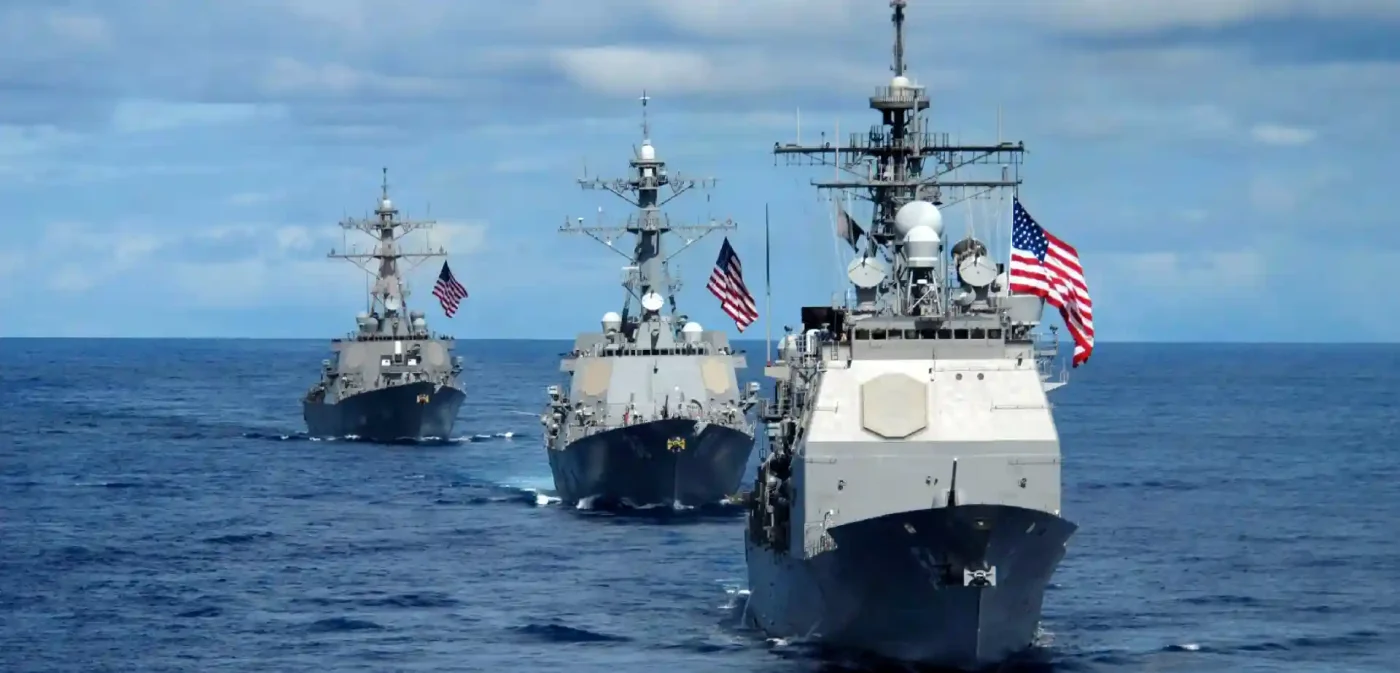Weeks after China’s coast guard raised the nation’s flag on a disputed sandbank in the South China Sea, a top US military official has reiterated Washington’s commitment to standing “shoulder to shoulder” with the Philippines in its territorial disputes with Beijing. The assurance comes as tensions escalate over the strategically vital region, raising concerns among smaller Indo-Pacific nations about being caught in the crossfire of superpower rivalry.
US Commitment to a Treaty Ally
On May 7, during a virtual press briefing, General Ronald Clark, the US Army’s Pacific commander, emphasized the deep military cooperation between the United States and the Philippines. “We have worked very closely with them – really day-to-day work – allowing for the dialogue necessary and the coordination necessary and interoperability between the Philippine armed forces and our own, to work through some of the challenges associated with some of the claims being made on their sovereign territory” said General Clark. He further underscored the US position as a treaty ally, stating, “As a treaty ally, we stand shoulder to shoulder with them as they work through challenges not just to features in the South China Sea, but also their sovereign territory at large.”
General Clark’s remarks follow a pledge by US Defense Secretary Pete Hegseth in March to strengthen ties with Manila and “restore deterrence” during a visit to Asia. However, Clark was careful to note that he could not speak on behalf of the Philippine government or dictate its actions, highlighting the delicate balance of alliance dynamics in the region.
Escalating Tensions at Sandy Cay
The latest flashpoint in the South China Sea centers on Sandy Cay, a reef within the disputed Spratly Islands, known as Tiexian Reef to China and located just kilometers from Thitu Island (Pag-asa in the Philippines), the second-largest natural island in the chain. Thitu hosts a small civilian population and a Philippine military outpost, making it a focal point in the overlapping territorial claims.
In mid-April, China’s coast guard unfurled the nation’s flag atop a sandbank at Sandy Cay, an action reported by Chinese media on April 25 but believed to have occurred two weeks earlier. The timing of the incident, shortly after the launch of the annual US-Philippines Balikatan (“shoulder to shoulder”) military drills on April 21, which involved over 17,000 personnel, has been widely interpreted as a direct challenge to both Manila and Washington. In response, the Philippines dispatched military personnel to stage their own flag-raising ceremony at the same location on April 28, prompting warnings from Beijing against actions that “violated China’s territorial sovereignty.”
The Spratly Islands, a collection of reefs, islets, and atolls, lie at the heart of competing claims by China, the Philippines, Vietnam, Malaysia, Brunei, and Taiwan. China’s expansive claims, often referred to as the “nine-dash line,” encompass nearly the entire South China Sea, a stance rejected by an international tribunal in 2016. Despite the ruling, Beijing has continued to assert control through military presence and infrastructure development, including artificial islands equipped with airstrips and radar systems.
Broader Implications for the Indo-Pacific
The South China Sea is not just a regional hotspot but a global one, with an estimated $3.4 trillion in annual trade passing through its waters. The area is also believed to hold vast reserves of oil and natural gas, adding economic stakes to the geopolitical tensions. For smaller nations in the Indo-Pacific, the escalating rivalry between the US and China poses a dilemma, as they fear being pressured to align with one side at the expense of their own interests.
The US-China relationship has deteriorated in recent years, marked by a bruising trade war that threatens global economic growth. Washington has accused Beijing of using coercive tactics to dominate the South China Sea, while China views US military exercises and alliances in the region as provocations. The flag-raising incidents at Sandy Cay are just the latest in a series of confrontations, including near-collisions between vessels and disputes over fishing rights, that have heightened the risk of miscalculation or conflict.
General Clark’s comments reflect a broader US strategy to reassure allies and partners in the face of China’s assertiveness. The Balikatan exercises, for instance, included training scenarios focused on maritime security and territorial defense, signaling a readiness to counter Beijing’s moves. Yet, some analysts caution that such displays of solidarity could further inflame tensions if not paired with diplomatic efforts to de-escalate the situation.
Philippine Perspective and Domestic Challenges
For the Philippines, the South China Sea dispute is not merely a matter of sovereignty but also of livelihood. Filipino fishermen have long relied on the waters around the Spratlys for their income, but increasing Chinese presence has led to confrontations and restricted access. Manila has sought to balance its response, pursuing diplomatic protests while bolstering military capabilities with US support. However, domestic political dynamics and public opinion add layers of complexity to its approach.
President Ferdinand Marcos Jr. has taken a firmer stance against China compared to his predecessor, Rodrigo Duterte, who prioritized economic ties with Beijing. Marcos has emphasized the importance of international law and partnerships with allies like the US, Japan, and Australia. Yet, there are concerns within the Philippines about being drawn into a larger conflict that could destabilize the region. Some Filipino lawmakers have called for greater transparency on the extent of US military involvement, wary of ceding too much control over national security decisions.
Regional Reactions and the Risk of Wider Conflict
Neighboring countries are watching the unfolding situation with unease. Vietnam, which also claims parts of the Spratly Islands, has faced its own run-ins with Chinese vessels in disputed waters. Hanoi has remained relatively quiet on the Sandy Cay incident, likely to avoid further straining relations with Beijing, a key economic partner. Meanwhile, Malaysia and Brunei, though less vocal, continue to monitor developments, aware that any escalation could disrupt maritime trade routes critical to their economies.
The Association of Southeast Asian Nations (ASEAN), of which the Philippines is a member, has struggled to present a unified front on the South China Sea. Efforts to negotiate a binding Code of Conduct with China have dragged on for years, hampered by internal divisions and Beijing’s reluctance to commit to enforceable terms. For many in the region, the lack of progress underscores the limitations of multilateral diplomacy in addressing power imbalances.
International observers have raised alarms about the potential for a small incident—such as a clash at Sandy Cay—to spiral into a broader military confrontation. The presence of multiple naval forces, combined with nationalist rhetoric on all sides, increases the likelihood of missteps. While neither the US nor China appears to seek direct conflict, the stakes in the South China Sea make it a persistent tinderbox.
Looking Ahead: A Delicate Balance
As tensions simmer, the US commitment to the Philippines serves as both a reassurance and a reminder of the high stakes in the Indo-Pacific. General Clark’s pledge to stand “shoulder to shoulder” with Manila may bolster confidence among allies, but it also raises questions about how far Washington is willing to go in the event of a direct confrontation with China. For now, the focus remains on military cooperation and dialogue, with the hope of preventing escalation.
Yet, the underlying issues—territorial sovereignty, resource access, and regional influence—are unlikely to be resolved soon. Smaller nations caught in this geopolitical tug-of-war continue to grapple with their own priorities, seeking stability in an increasingly uncertain landscape. As flag-raising ceremonies and military drills play out against the backdrop of the South China Sea, the world watches to see whether diplomacy or discord will shape the region’s future.
















